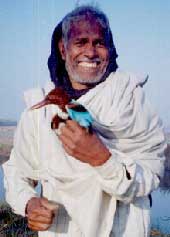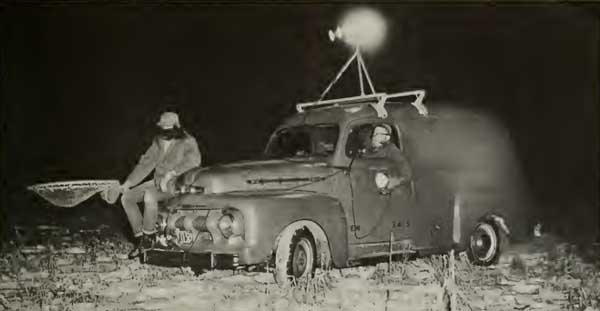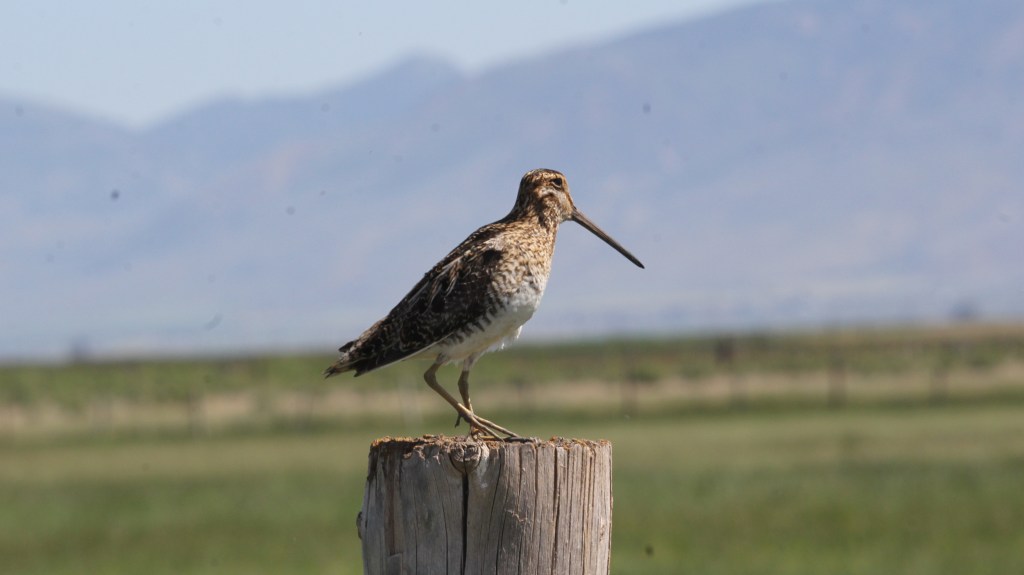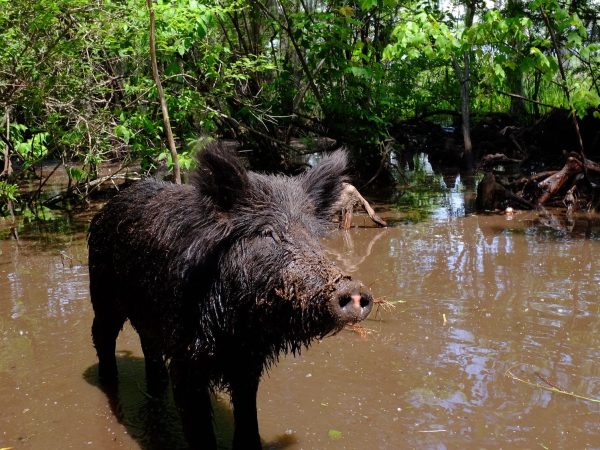There is a common belief that a “snipe hunt” is some sort of wild goose chase, a hazing ritual for naïve outdoors folk.
Consider the Wikipedia entry on the topic:
“A snipe hunt, a made up hunt that is also known as a fool’s errand, is a type of practical joke that involves experienced people making fun of credulous newcomers by giving them an impossible or imaginary task. The origin of the term is a practical joke where inexperienced campers are told about a bird or animal called the snipe as well as a usually preposterous method of catching it, such as running around the woods carrying a bag or making strange noises such as banging rocks together.”
The truth of the mythical snipe hunt is that the “fake” tools and techniques a rube is supposed to use are actual tools and techniques for catching real snipe.
The Wikipedia and Urban Dictionary pages cite moonless nights, spotlights, noisemakers, and gunny sacks. Yes!
These are the tools of the trade for a bird-catching tradition that goes back a very long way.
I first learned about snipe hunt techniques from famed Indian bird trapper Ali Hussein. He comes from a long line of bird trappers who once caught birds for profit.

As times changed, Ali developed a conservation ethic and began using his deep knowledge and experience to catch birds for science instead.
I met Ali at Hawaii Volcanoes National Park while he was on a world tour of biological stations, traveling with a translator and a passel of trapping gear (made mostly from bamboo and other natural materials) to share his skills and knowledge with biologists.
One of the simpler techniques Ali demonstrated was the “torch and gong.” The bird trapper takes advantage of a moonless night to find water birds (such as snipe) carrying a flaming torch while beating a disorienting gong to obscure the sounds of the approaching trapper.
When the bewildered bird is spotted, a net is thrown over it to catch it. A snipe hunt, plain and simple.
The snipe hunting tradition has continued in wildlife research, with updated tools and techniques. For example a 1959 report from the Illinois Natural History survey outlines the snipe-hunting method (they call it “night-lighting”) using a truck driven through a field with a generator-powered bank of spotlights, with a trapper riding on the hood carrying a long-handled net.

And even now, right here in Cape May, a multi-year study of migrating and wintering woodcock (a very similar bird to snipe) employs the snipe-hunt technique (or if you prefer, the torch and gong, night-lighting, or in Ali’s language, luki-phanna) as their primary capture technique.
At some woodcock trapping sites, the snipe are numerous as well. Once in a while the woodcock trappers scoop up a snipe, just to prove that snipe hunting is by no means a fool’s errand.





When I was seven, my uncle and cousin took me into the woods at night with a flash light and pillow case and told me we’re snipe hunting. They told me to keep walking down the path to catch a snipe. I did that and they walked the other way leaving me alone. I came upon an animal’s glowing yellow eyes in the distance. I started walking towards it thinking it was a snipe. Those eyes still haunt me.
I’m here to report that I have four times observed the Woodcock . Three times at such close quarters that , if I had tried I could have reached out and touched them.
The fourth time was very unusual. Driving to work at the Historic Site in Forestville State Park in SE Minnesota, I saw four newly hatched woodcock chicks clustered on the side of the road. It was a cold Spring, so mom had put them up on the blacktop to get warm. I rolled down the window and told ’em I thought it was a dangerous decison. Momma appeared out of the grass, gathered her babies and led them into the woods. They were adorable little fuzz balls! How often do they reveal themselves so to intimately? I felt very privileged to be so graced.
Very informative & clear.
Wonder why addition of ‘gutter’ for gutter-snipe developed.. Good work
I have seen woodcocks in the woods, they look like a cross between quail and snipe. They can fly with their head upright and long pointy beak horizontal.
I’ve seen them fly with their head upright and their long pointy beak vertical, not horizontal (my other horizontal. lol).
We use to shoot snipe sometimes when we were quail hunting in Northwest Florida above Pensacola near the Alabama line. They would be near the creeks and wet branches while they were hunting for worms and grubs near the wet areas. I remember back in the mid 60’s we took two brothers on the night time snipe hunt. There were 8 of all together. The six of us put the two brothers out in a ditch and told them the snipe would run down the ditch right into their sacks. We told them to whistle and that would make them come into the sack. We did this for about 2 hours. The brothers were holding that sack while we were sitting at the campfire laugh while they were whistling for the birds. Boy they sure got mad at us when we told them the truth. It was a great time for all for a bunch of young guys growing up in the country. I still love telling this story today.
> There is a common belief that a “snipe hunt” is some sort of wild goose chase, a hazing ritual for naïve outdoors folk.
Which is demonstrably true.
Somehow I think you’ve misunderstood this or are willfully misinterpreting it
I had no idea there was a real Snipe and the methods for capture were just as odd until today. Nice to know.
This was a right-of-passage type thing that
A) Kept inexperienced “Hunter” safe.
B) Kept him in range as subject is usually 8 to 10 years old, mostly male but also inexperienced female hunters are also given this right.
C) No one gets hurt, as hollering “Here Snipe” and smacking your bag with a stick or net pole will result in no dangerous (or any) animals will be within 50 miles of me or “subject”.
D) after an hour, I discovered my father and his friends laughing hysterically every time I yelled “Here Snipe” So the gig was up.
To me, it was a fable, and a right of passage. I proudly brought my 410 gauge bird-shotgun, but no father in his right mine was going to let a 10 year old go off in the woods at night with it, possibly shooting myself, or them by accident. It also allowed them to pass around the flask a bit more frequently before I returned, we laughed TOGETHER, everyone patted me on the back, and these were all vets. I felt a little closer to being a man that night, and I will never forget it.
Thanks so much for sharing this information! I always thought a snipe was a myth because of all the snipe hunting tricks on campers, etc. Thanks for separating fact from fiction and including your clear, beautiful photo!
I loved this story and comments, so much fun! Although I may not have been as good a sport as many here, I too would have rather been running around the woods at night than inside playing cards for the summer.